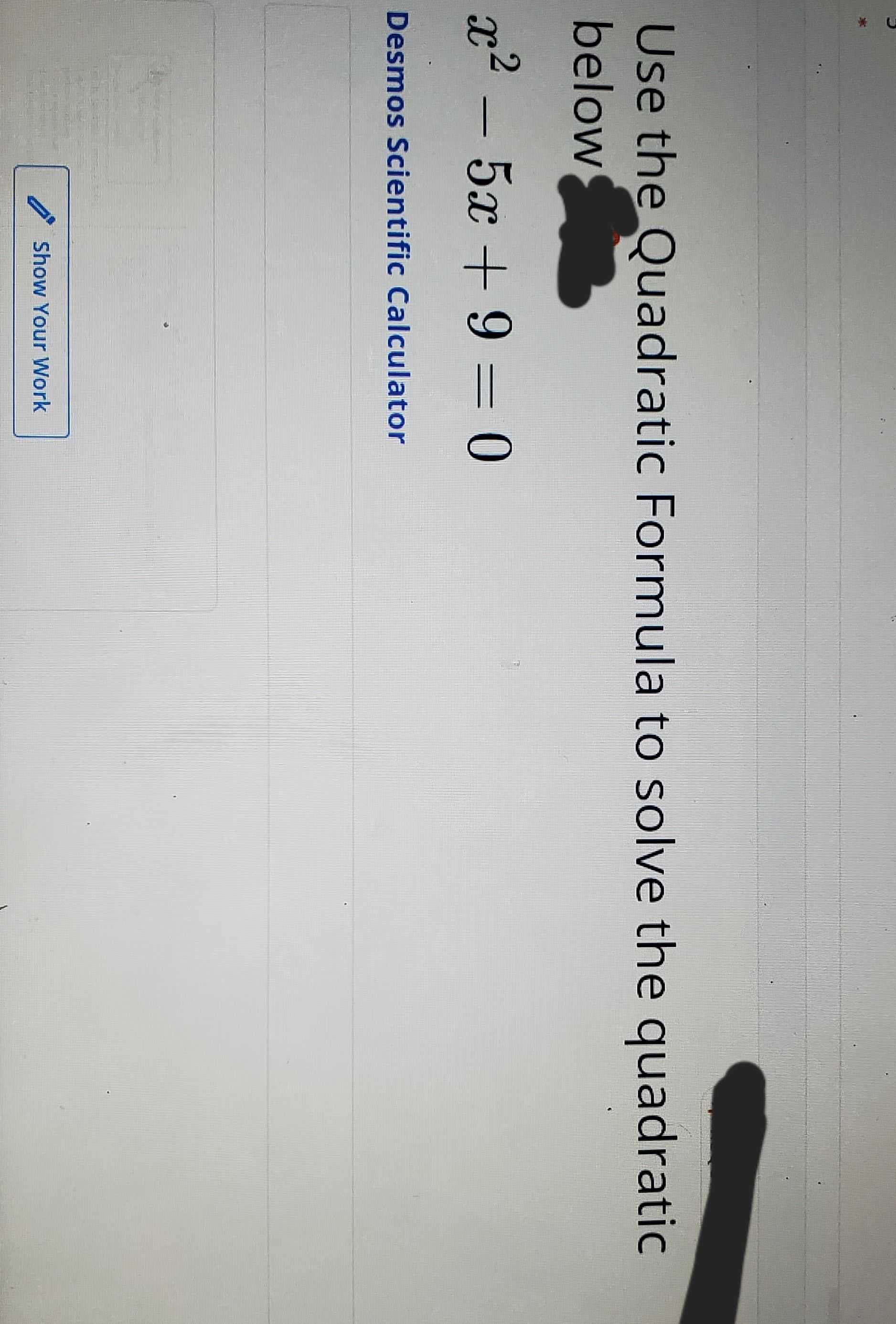AI tutor
Welcome to Bytelearn!
Let’s check out your problem:

Use the Quadratic Formula to solve the quadratic belowDesmos Scientific CalculatorShow Your Work
Full solution
Q. Use the Quadratic Formula to solve the quadratic belowDesmos Scientific CalculatorShow Your Work
- Identify coefficients: Identify the coefficients , , and in the quadratic equation . The standard form of a quadratic equation is . Comparing this with our equation, we find that , , and .
- Write Quadratic Formula: Write down the Quadratic Formula.The Quadratic Formula is . We will use this formula to find the roots of the equation.
- Substitute values: Substitute the values of , , and into the Quadratic Formula.Substitute , , and into the formula to get the roots of the equation.
- Simplify terms: Simplify the terms inside the square root and outside.Calculate the discriminant (the expression inside the square root) and simplify the constants outside the square root.
- Simplify square root: Simplify the expression under the square root. Since , we have a negative number under the square root, which indicates that the roots will be complex numbers.
- Express in terms of i: Express the square root of the negative number in terms of i, where i is the imaginary unit. can be written as , since i is defined as .
- Divide by : Simplify the expression by dividing both terms by . *
- Write roots in form: Write the roots in the simplest form. Express the roots as two separate terms, one with the plus sign and one with the minus sign. &
More problems from Quadratic equation with complex roots
QuestionGet tutor help
QuestionGet tutor help
